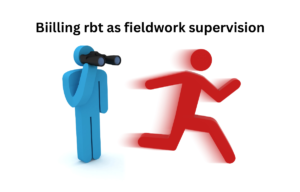Trauma is a complex and deeply personal experience that affects millions of people around the world. The psychological and emotional aftermath of traumatic events can be life-altering, impacting an individual’s ability to function in their daily life. For those seeking effective treatment for trauma, Trauma Systems Therapy (TST) offers a unique approach that considers not only the individual’s emotional and psychological state but also the environment in which they live and interact. Developed as an integrated treatment model, TST works to address the broad range of challenges that arise in the aftermath of trauma, offering a holistic approach to healing.
1. What Is Trauma Systems Therapy (TST)?
Trauma Systems (TST) is a therapeutic approach designed to treat individuals who have experienced complex trauma. It was developed by Dr. Margaret Blaustein and Dr. Kristine Kinniburgh in response to the need for a comprehensive treatment method that addresses the various layers of trauma. Unlike traditional therapies, TST recognizes that trauma impacts not only an individual’s psychological well-being but also their physical, social, and environmental context.
The therapy is grounded in the understanding that trauma can lead to dysregulation in several systems of the body and mind, including emotional regulation, self-control, and relationships. TST aims to restore balance in these systems by addressing trauma at multiple levels and providing interventions that help individuals regain a sense of safety and control in their lives. The therapy includes both individual and environmental interventions, focusing on enhancing resilience and providing strategies for coping with stressors in the aftermath of trauma.
2. How Does Trauma Systems Therapy Work?
Trauma Systems Therapy works by combining various therapeutic approaches and techniques to address the multi-dimensional effects of trauma. One of the key components of TST is the recognition that trauma survivors often face challenges in multiple areas of life, such as relationships, work, school, and physical health. Therefore, TST aims to provide a holistic treatment that supports recovery across all of these domains.
The therapy works by first stabilizing the individual and creating a sense of safety. This might include helping the person understand their trauma, teaching coping skills, and providing resources to manage stress. Once stability is achieved, therapists work with the individual to process the trauma, work through emotional dysregulation, and rebuild their support systems. TST also emphasizes the importance of the community and environment, encouraging external supports like family, school, and social services to become active partners in the healing process.
3. What Are the Key Principles of Trauma Systems Therapy?
The core principles of Trauma Systems focus on understanding trauma as a system-wide issue rather than a singular, isolated experience. These principles include:
- Safety: One of the most critical aspects of TST is creating a sense of safety for the individual. This involves understanding how trauma affects emotional regulation and creating a therapeutic environment that promotes trust.
- Stabilization: Before delving into trauma processing, TST prioritizes stabilizing the individual. This may involve developing coping mechanisms and routines to deal with trauma triggers in day-to-day life.
- Integration: After stabilization, TST works on integrating trauma into the individual’s life in a way that makes sense and helps them make meaning of the experience. This involves reframing the trauma and learning to manage emotions in healthier ways.
- Community Support: TST emphasizes the role of external support systems, including family, friends, schools, and other community resources, to help the individual heal.
These principles ensure that therapy addresses the person’s psychological, emotional, and environmental needs, leading to a more comprehensive and effective healing process.
4. How Is Trauma Systems Therapy Different from Other Therapy Models?
Trauma Systems differs from other therapy models in that it integrates multiple treatment techniques and is specifically designed for individuals who have experienced complex trauma. Unlike some therapies that focus primarily on emotional or cognitive processing, TST takes a systems approach, considering all aspects of a person’s life.
While traditional therapies like Cognitive Behavioral Therapy (CBT) may focus on changing negative thought patterns, TST adds an additional layer by focusing on the regulation of physiological systems, environmental support, and community involvement. Additionally, TST addresses trauma across all age groups, from children to adults, recognizing that trauma impacts individuals differently at different life stages. It’s also particularly effective for those who have experienced chronic, complex trauma, such as abuse, neglect, or ongoing stress.
5. What Are the Benefits of Trauma Systems Therapy?
The benefits of Trauma Systems are vast and wide-ranging, impacting both individuals and their communities. One of the primary benefits is the improvement in emotional regulation and stability. By addressing the physiological and emotional systems affected by trauma, TST helps individuals learn how to manage their emotions in a healthy way and reduce symptoms of anxiety, depression, and PTSD.
Another key benefit is the enhancement of interpersonal relationships. TST provides tools for improving communication, building trust, and forming healthier relationships, which are often disrupted by trauma. The therapy also focuses on rebuilding the individual’s support system, including encouraging community involvement and external resources that can help during recovery.
6. Who Can Benefit from Trauma Systems ?
Trauma Systems Therapy can be beneficial for individuals of all ages who have experienced trauma, but it is particularly helpful for those with complex trauma histories. This includes individuals who have experienced repeated trauma or those who are dealing with multiple layers of trauma, such as abuse, neglect, and exposure to violence.
Children, adolescents, and adults can all benefit from TST, though the approach may differ slightly based on age and developmental stage. For children and adolescents, TST may involve more family-based interventions, as their relationships with caregivers and teachers are integral to the healing process. For adults, the therapy may focus more on individual coping strategies and rebuilding a support system in the community.
7. How Can I Access Trauma Systems ?
Accessing Trauma Systems Therapy can vary depending on where you live and the resources available in your area. Many therapists and treatment centers offer TST as part of their trauma-focused services, especially in communities with high rates of trauma or adverse childhood experiences.
It’s important to start by looking for licensed professionals who specialize in trauma therapy. Some organizations may even offer group therapy sessions focused on TST, particularly for those recovering from specific types of trauma, such as sexual abuse, domestic violence, or PTSD. If you’re interested in finding a therapist or treatment center that offers TST, it’s best to ask about their experience and approach to trauma healing.
Trauma Systems (TST) is a powerful, multi-faceted approach to treating trauma that addresses not only the individual’s psychological and emotional needs but also the broader environmental and community contexts that influence healing. By focusing on safety, stabilization, and integration, TST helps individuals regain control over their emotions, rebuild their relationships, and find strength in their support systems. This holistic approach makes it an effective treatment for those dealing with complex trauma, particularly for individuals who have experienced repeated or ongoing traumatic events.
For more updates visit our website.









